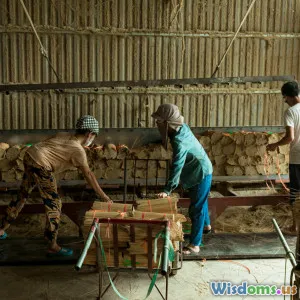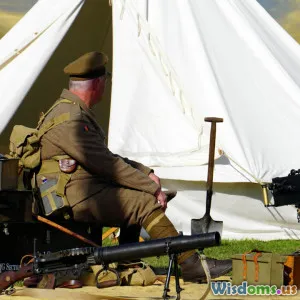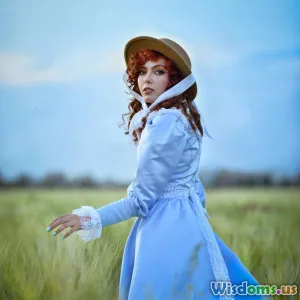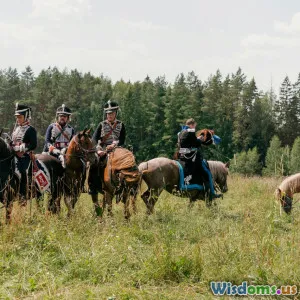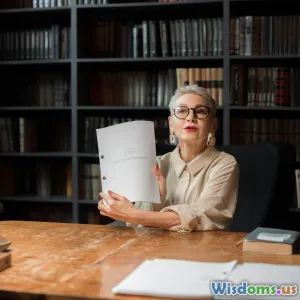
Women in Literature: A Historical Perspective
9 min read Explore the evolving role and impact of women in literature through history, from ancient voices to modern trailblazers. (0 Reviews)
Women in Literature: A Historical Perspective
Introduction
Throughout history, literature has not only been a reflection of society’s values and norms but also a powerful tool for social change. Women, though historically marginalized in many domains, have played a pivotal role in shaping the literary world — often fighting systemic barriers to make their voices heard. The story of women in literature is one of perseverance, transformation, and profound influence, revealing much about gender dynamics, cultural shifts, and the evolution of storytelling itself.
This article explores the historical trajectory of women in literature, delving into early challenges, breakthrough moments, and the lasting impact female authors and characters have had on readers and society. From ancient myths to contemporary novels, women’s literary presence offers a compelling window into both oppression and empowerment.
Early Voices and Constraints
Ancient and Classical Literature
Women’s voices in literature during antiquity were scarce but significant when present. Early works like the Greek epics often portrayed women through the lens of male authors as symbols or archetypes rather than complete characters. Yet, some exceptions stand out — such as Sappho, the ancient Greek poet from Lesbos, celebrated for her lyric poetry that touches on personal emotions and love. Her fragments remain some of the few surviving voices of women in early literature.
In Roman times, figures like the poetess Sulpicia showcased early feminist undertones, challenging norms by openly writing about personal love and social roles. However, as literature was overwhelmingly patriarchal and tied closely to male-dominated cultural institutions, women's direct participation remained limited.
The Middle Ages and Renaissance: Emerging Despite Constraints
During the medieval period, literature was often produced within religious settings like monasteries, where women served as nuns and monks alike preserved texts. Women such as Hildegard of Bingen combined mysticism and scholarship to create influential works in theology, philosophy, and medicine.
The Renaissance reignited interest in humanism and individual creativity, facilitating a gradual rise in women writers. Christine de Pizan, dubbed the first professional female writer in Europe, authored The Book of the City of Ladies (1405), defending women’s intellect and rights through allegory—a groundbreaking feminist text for the era.
Still, widespread educational restrictions, social norms, and legal disabilities constrained women’s access to publication and recognition. Pseudonyms and anonymity were common, underscoring the risks associated with women claiming literary authority.
The 18th and 19th Centuries: Breaking Barriers
The Rise of the Novel and Female Authorship
The 18th century witnessed a literary revolution: the novel became the dominant form, opening new doors. Women embraced this format, channeling authentic representations of female experience that contrasted with male-authored stereotypes.
Authors like Aphra Behn (one of the first English women to earn a living through writing), Mary Wollstonecraft (a pioneering feminist philosopher and novelist), and Fanny Burney challenged assumptions about women writers. Wollstonecraft’s A Vindication of the Rights of Woman (1792) fused political philosophy with literary critique, advocating equality and education.
Victorian Era: A Flourishing Despite Restrictions
In Victorian England, female novelists reached unprecedented prominence. The Brontë sisters—Charlotte, Emily, and Anne—initially published under male pseudonyms to gain respect. Their works (Jane Eyre, Wuthering Heights, and The Tenant of Wildfell Hall respectively) remain masterpieces exploring complex emotional and social themes.
Similarly, George Eliot (real name Mary Ann Evans) crafted intellectual novels like Middlemarch, delving deeply into morality and social commentary, demonstrating that women could produce intellectually rigorous literature without compromising authenticity.
The 19th century also marked greater female participation in literary salons and periodicals, and an increase in literary awards and recognition. Still, gender biases persisted, and many women had to navigate a male-dominated publishing world.
The 20th Century: Expanding Horizons and Voices
The 20th century became a watershed era for women’s literature, marked by diverse voices, experimental forms, and politically charged themes.
Feminist Literature and the Modernist Movement
Modernism, with figures such as Virginia Woolf, revolutionized narrative techniques and perspectives. Woolf’s A Room of One's Own (1929) famously argued that women need financial independence and private space to create art, highlighting systemic barriers to creative freedom.
Women writers like Zora Neale Hurston challenged racial and gender norms in the Harlem Renaissance. Her novel Their Eyes Were Watching God illuminated African American female experience with rich language and cultural depth.
Simone de Beauvoir’s The Second Sex (1949) offered a philosophical treatise on the construction of womanhood and gender roles, influencing subsequent feminist discourse and literary criticism.
Diverse Voices and Global Perspectives
Postcolonial literature introduced a broader scope with writers like Chimamanda Ngozi Adichie and Arundhati Roy gaining prominence. These authors explore intersections of gender, race, and colonial heritage, expanding the boundaries of women’s narratives in literature worldwide.
Women’s autobiographical and diary writings also gained attention, from Anne Frank’s poignant diary to Maya Angelou’s powerful memoirs, offering vital personal insights into historical traumas and triumphs.
Contemporary Landscape: Empowerment and Challenges
Today, women authors dominate bestseller lists and literary prizes globally. The increased accessibility of publishing through digital platforms, diverse literary awards, and feminist publishing houses has amplified numerous voices previously marginalized.
For instance, Margaret Atwood's speculative fiction (The Handmaid’s Tale) critiques authoritarianism and patriarchal control, sparking widespread cultural conversations. Similarly, authors like Roxane Gay address issues such as identity, trauma, and intersectionality within their works, contributing richly to contemporary literary discourse.
Nevertheless, disparities remain. Industry data reveal ongoing challenges regarding pay gaps, publishing biases, and representation in literary criticism. However, ongoing activism, mentorship programs, and inclusive literary festivals continue to drive positive change.
Conclusion
The journey of women in literature is a profound narrative of resilience, creativity, and transformation. From scarce voices in antiquity to shaping the global literary canon today, women writers have fundamentally redefined storytelling—with their varied perspectives offering deeper, more nuanced understandings of the human condition.
Acknowledging this history matters not only to honor trailblazers who defied societal confines but also to inspire future generations. In reading and elevating women’s literature, we engage with rich artistic traditions and champion ongoing efforts for equality and representation in the literary world.
Ultimately, the evolving role of women in literature reflects broader social changes and continues to shape how stories are told, shared, and valued.
References & Further Reading
- Gilbert, Sandra M., and Susan Gubar. The Madwoman in the Attic: The Woman Writer and the Nineteenth-Century Literary Imagination. Yale University Press, 2000.
- Woolf, Virginia. A Room of One's Own. Harcourt, 1929.
- Wollstonecraft, Mary. A Vindication of the Rights of Woman. Pandora Press, 2004.
- Showalter, Elaine. A Jury of Her Peers: American Women Writers from Anne Bradstreet to Annie Proulx. University of Minnesota Press, 2009.
- Moi, Toril. Sexual/Textual Politics: Feminist Literary Theory. Routledge, 2002.
Rate the Post
User Reviews
Popular Posts

















